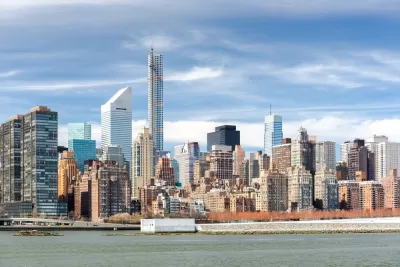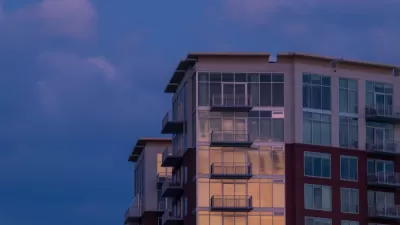A clearer picture of the economic downturn's effects on New York City real estate is emerging. So far, new buyers are betting on boroughs not named Manhattan.

Stefanos Chen finds evidence of resilience in the New York City for-sale real estate market.
"Five months after Covid-19 crippled the city’s real estate market, sales across the city are down, but the boroughs beyond Manhattan are faring better, in some rare cases even exceeding pre-pandemic expectations."
Chen describes the state of the for-sale market in New York City by first setting aside the "overstated" narrative about an exodus from the city, and blaming many of the high prices on wealthy owners of second homes in the city—many of whom have left the city since the outset of the pandemic, leaving new space for first-time and move-up buyers. With condo supply building before 2020, the effects of the pandemic now mean that 60 percent of the condos on the market in New York City are unsold.
But those who have stayed, lured by near-record-low mortgage rates and an abundance of choices, are betting on the city’s long-term revival while they still have some leverage. Discounts remain modest at the lower end of the market, but buyers are getting back-end concessions and first crack at units with better views and layouts that were often the first to sell.
The reshuffling of the market could influence the direction of new development for years to come in the city, according to Chen: "more outdoor space, fewer bells and whistles, and above all, smaller price tags. The shift could also be a blow to the ultraluxury skyscraper, as more buyers show a preference for smaller “boutique” buildings and less reliance on cramped elevators."
As for the data to back up Chen's narrative about the strength of the home-buying market in parts of the city not named Manhattan, Chen lists condo sale data from every borough, noting that the decline in sales has been far less severe outside of Manhattan.
A lot more analysis about the trends in the New York City for-sale market are included in the article.
FULL STORY: In New Development, Buyers Favor the Boroughs

Study: Maui’s Plan to Convert Vacation Rentals to Long-Term Housing Could Cause Nearly $1 Billion Economic Loss
The plan would reduce visitor accommodation by 25,% resulting in 1,900 jobs lost.

Placekeeping: Setting a New Precedent for City Planners
How a preservation-based approach to redevelopment and urban design can prevent displacement and honor legacy communities.

Using Old Oil and Gas Wells for Green Energy Storage
Penn State researchers have found that repurposing abandoned oil and gas wells for geothermal-assisted compressed-air energy storage can boost efficiency, reduce environmental risks, and support clean energy and job transitions.

Washington State Plans Ambitious ‘Cycle Highway’ Network
The state is directing funding to close gaps in its existing bike network and make long-distance trips more accessible.

Homeowners Blame PG&E for Delays in ADU Permits
The utility says it has dramatically reduced its backlog, but applicants say they still face months-long delays for approvals for new electrical work.

Rethinking Wildfire Defense: How a Landscape Approach Can Protect Neighborhoods
Post-fire analysis of the Eaton Fire reveals that a landscape approach — including fire-resistant vegetation, home hardening, and strategic planning — can help reduce wildfire risk, challenging assumptions that trees and plants are primary fire hazards.
Urban Design for Planners 1: Software Tools
This six-course series explores essential urban design concepts using open source software and equips planners with the tools they need to participate fully in the urban design process.
Planning for Universal Design
Learn the tools for implementing Universal Design in planning regulations.
Borough of Carlisle
Caltrans
Heyer Gruel & Associates PA
Institute for Housing and Urban Development Studies (IHS)
City of Grandview
Harvard GSD Executive Education
Salt Lake City
NYU Wagner Graduate School of Public Service
City of Cambridge, Maryland





























